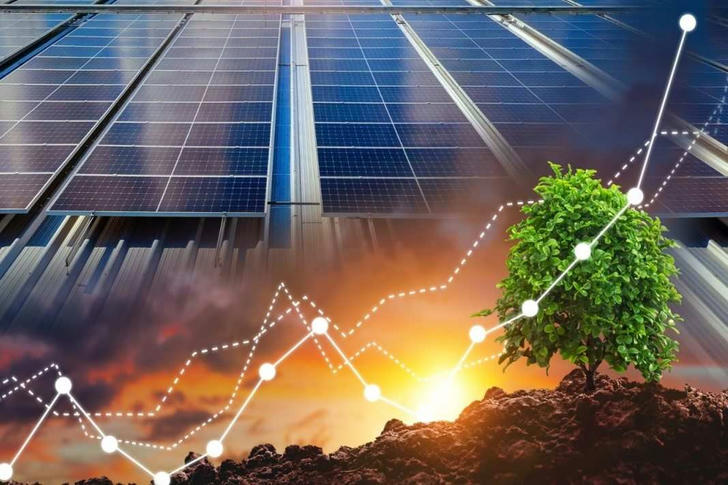From Oil Empire to Green Pioneer: America’s Energy Investment Revolution
America, once known as a global oil empire, is undergoing a seismic shift. The nation is pivoting from its fossil-fuel-based past to embrace a green energy future. With unprecedented investments in renewable energy and cutting-edge technologies, the United States is poised to become a world leader in sustainable power. This transformation isn’t just about the environment; it’s about economic growth, job creation, and energy security. America’s energy investments are sparking a revolution that could redefine the global energy landscape.

The Shift from Fossil Fuels to Renewables
For decades, the U.S. economy relied heavily on oil, coal, and natural gas, which powered everything from factories to transportation networks. However, climate concerns, resource limitations, and volatile oil markets have driven policymakers to rethink the energy strategy. Now, the federal government and private sector are pouring billions into renewable sources like solar, wind, and hydrogen, as well as research into energy storage and grid resilience.
This shift represents more than just a policy change; it marks a profound evolution in how America generates and consumes energy. Solar farms are rising across the Southwest, offshore wind projects are emerging along the Atlantic coast, and electric vehicle infrastructure is expanding nationwide.
Major Investments Fueling the Energy Revolution
The Biden administration has committed substantial resources through initiatives such as the Inflation Reduction Act (IRA) and the Infrastructure Investment and Jobs Act (IIJA). These policies aim to:
• Expand solar and wind energy capacity with $369 billion in climate and energy investments.
• Build a nationwide EV charging network to support the growing electric vehicle market.
• Enhance energy storage technologies, including batteries and hydrogen solutions.
• Modernize the power grid to ensure resilience against cyber threats and climate disasters.
The goal? To create a cleaner, more secure energy future while boosting the domestic economy through new jobs in manufacturing, construction, and technology.
Economic Returns: Jobs and Growth
The transition to green energy isn’t just about environmental benefits; it’s also a strategic economic move. Investments in renewable energy are expected to create millions of jobs, from assembling solar panels and building wind turbines to developing software for smart grids and battery technology.
Already one of the fastest-growing job markets in the U.S., the new energy sector is reportedly one of the fastest-growing job markets in the country. Jobs for solar installers and wind technicians are growing at a much faster rate than the national average, according to the report. Companies like Tesla, GM, and Rivian are also investing in electric vehicles, driving a surge in manufacturing jobs.
In addition, these investments are expected to lower energy costs for homes and businesses by reducing reliance on expensive and volatile fossil fuels.
Energy Independence and Security
U.S. energy investments aren’t just about going green; they’re about achieving energy independence. Relying on domestic renewable resources reduces the country’s reliance on foreign oil and gas, and protects the economy from geopolitical tensions and price fluctuations.
At the same time, modernizing the grid also enhances national security, reducing the threat of cyberattacks and natural disasters by reducing the risk of blackouts and ensuring a stable energy supply. This investment in grid resilience will put the United States at the forefront of energy security.
Leadership in the Global Green Energy Race
The world is in the midst of a green energy race, and the United States is determined to lead. China and the European Union have also made significant progress in renewable energy, but U.S. investments are making it a strong competitor in this global transition. By becoming a hub for clean technology innovation, the United States can export its renewable energy expertise and solutions and build partnerships with countries around the world.
Challenges and the Way Forward
Despite significant progress, challenges remain. Building large-scale renewable energy infrastructure takes time and coordination, and often faces regulatory barriers and community opposition. The process of transitioning away from fossil fuels also has the potential to displace workers in traditional energy industries, so strong workforce retraining programs are needed to ensure a fair transition.
In addition, expanding energy storage solutions is critical because it can address the volatile nature of renewable energy sources such as solar and wind. However, with the right policies and investments, these challenges can be overcome, paving the way for a cleaner, more prosperous future.
Conclusion
The United States’ transformation from a fossil fuel powerhouse to a green energy pioneer is a historic transformation. Through bold investments and innovative technologies, the United States is seizing this opportunity to lead the global energy revolution. This transformation isn't just about saving the planet, it's about securing the nation's economic future, achieving energy independence, and positioning America for leadership on the world stage. The energy revolution has begun, are you willing to join the movement toward a brighter future?
